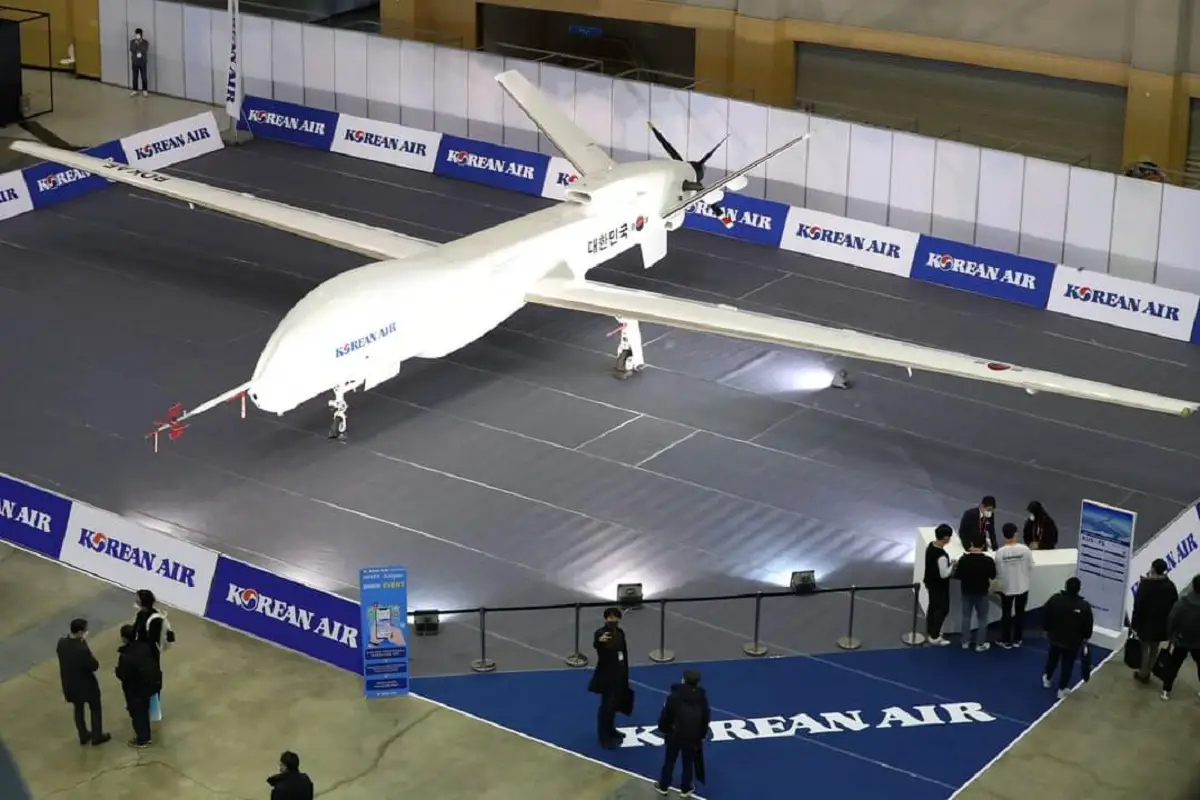South Korea has recently commenced the production of its domestically engineered Medium-Altitude Unmanned Aerial Vehicle (MUAV), marking a significant stride in enhancing the Republic of Korea (RoK) military’s critical reconnaissance capabilities. According to the Defense Acquisition Program Administration (DAPA), the MUAV is expected to elevate the surveillance and reconnaissance capabilities of the armed forces, concurrently contributing to the nation’s future defense exports. Kim Tae-gon, the head of DAPA’s Advanced Technology Division, expressed optimism about the project’s potential impact on defense capabilities and export opportunities.
A strategic collaboration between Korean Air, the country’s largest airline, and defense companies LIG Nex1 and Hanwha Systems culminated in a substantial contract valued at 471.7 billion won ($352.8 million) with DAPA in December. This agreement sets the stage for the development of cutting-edge spy drones, colloquially referred to as the ‘Korean Reaper’ or Korean Unmanned System (KUS-FS), scheduled for deployment by 2028. The MUAV, with a length of 13 meters, a height of 3 meters, and an impressive wingspan of 25 meters, signifies a crucial advancement in unmanned aerial surveillance technology.
These state-of-the-art unmanned surveillance aircraft are equipped with diverse payloads tailored for intelligence, surveillance, and reconnaissance (ISR) missions. The KUS-FS, designed for medium altitude operations, can reach flying heights ranging from 10 to 12 kilometers above ground and capture high-resolution images from distances up to 100 kilometers. Production of the MUAV was officially launched during a meeting held at the Korea Aerospace Research Institute (KARI) in Busan on January 24 and 25, attended by representatives from DAPA, the Agency for Defense Development (ADD), the RoK Air Force (RoKAF), and South Korea’s Joint Chiefs of Staff (JCS).
DAPA outlined its plan to deliver the MUAVs sequentially to the RoKAF, highlighting a contract signed by ADD with Korean Air Aerospace Division (KAL-ASD), LIG Nex1, and Hanwha Systems in December 2023 to initiate production. The three companies have been actively involved in the research and development of the MUAV, with KAL-ASD serving as the primary contractor since 2008. Although specific details regarding the production plan remain undisclosed, DAPA revealed that the total project cost is estimated at KRW 471.1 billion (USD 352.4 million). This production milestone underscores South Korea’s commitment to advancing its defense capabilities and positioning itself as a significant player in the global unmanned aerial vehicle market.












